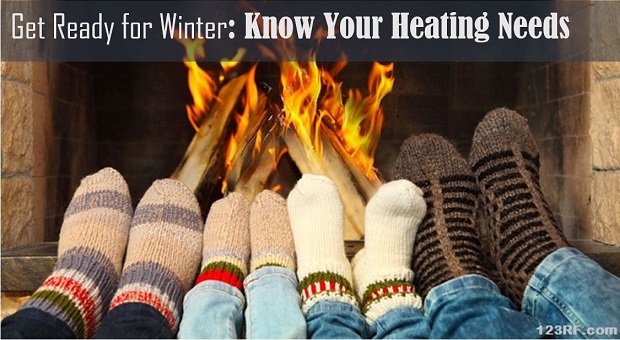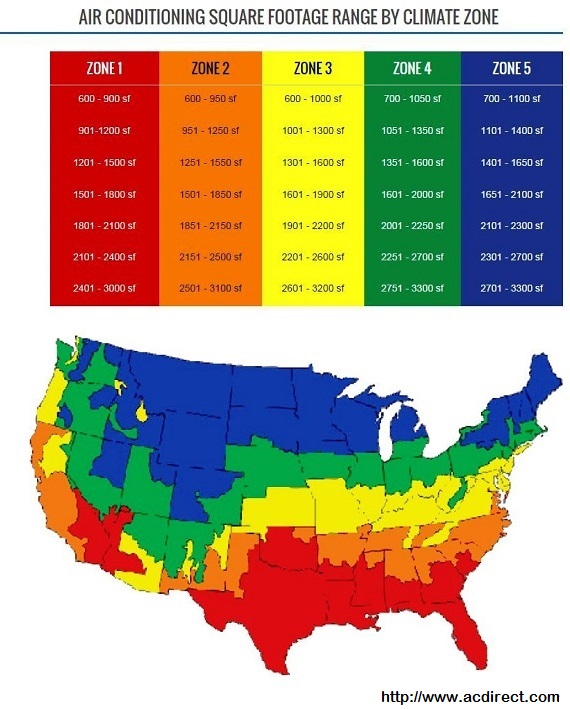Winter is coming and nobody likes to freeze from a lack of adequate heating, especially in those areas with severe weather. Hence, knowing how to calculate your heating needs for the coming winter is one thing to do these days, while putting up your winter survival plans.
One of the most important issues to be taken care of is choosing the right gear, i.e. the adequate furnace for your residence. It’s not just a matter of personal preference or comfort; it will make a difference when it comes to paying your heating bill. A good furnace will keep you very comfy during wintertime without burning too much fuel or sucking your wallet dry.
More, you definitely start from your heating needs when choosing the right fuel for the cold months to come.
Let’s Do the Math
There are several methods for you to determine how many BTUs (British measuring units) of heat you’ll require this winter.
As a general rule of thumb, the simplest way to calculate your heating needs and the adequate furnace for your residence is by using science, i.e. guidelines and rules based on two main things: your location (climate) and the square footage you live in.
Basically, you’ll have to calculate thoroughly the square footage in your place of residence by measuring the rooms’ dimensions. You may already know this from when you purchased your property. Typically, it’s listed on your property assessment.
Depending on your location, if you’re living in a relatively moderate climate (such as the Pacific Northwest) you’ll need a mere 30 BTUs /square foot during the winter. If you’re a resident of let’s say Minnesota, you’ll require about 45 (even 50) BTUs per square foot and you’ll regret that you haven’t move to California yet when the bill comes!
Given the fact that a standard house in the US has about 2000 square feet of living space, the amount of heat required for the wintertime will measure anywhere between 60,000 and 90, 000 BTUs, depending on your location.
Video first seen on Aire Serv.
Translated into math, you should multiply the square footage that must be heated by the heating factor determined by your climate and the end result is the required output for your furnace.
The BTU output will tell you the heating capacity of a given model of furnace. Remember, there can be only one furnace that fits your house perfectly: not too small, not too big, just the right size!
Now, when it comes to replacing and buying a furnace, with these figures in mind, you should choose one that is able to heat your living space in an efficient manner. You must check out the output BTUs of the respective furnace and see if it fits your needs.
A 100,000 BTU-rated furnace with an efficiency of 75% will have an effective output of 75,000 BTUs. Obviously, you can choose a high-tech furnace with a lower output/rating but a greater efficiency that is capable of delivering the same output for less energy consumed. Well, you got the general idea.
When it comes to calculating the square footage of your home, you should keep in mind that rooms are usually shaped as a triangle or rectangle. If your room has a weird shape, well, you can break it down into rectangles and triangles and calculate the square footage for each of them using the following formulas:
- For a rectangular room, the square footage is determined by multiplying its width with its length,
- For a triangular room the square footage is equal to length x width divided by 2 and for a circular room the square footage is equal to the radius (the distance from a wall to the center of the room) multiplied by itself multiplied by the number Pi (3.14).
Easy as Pi, isn’t it?
With the final result in mind (don’t forget to measure everything, including basements, attics and what not) you’ll be able to determine the required heating capacity of your furnace (the respective capacity is given in BTUs /hour).
Raw Numbers Are Useless Unless…
… you connect them with the reality around you. Two main things must be taken into account: the climate you live in and the insulation of your home. Another factor is the windows size/placement (heat gets lost through these but it’s very complicated to make a precise estimate so we’ll leave it here), along with your square footage. The final factor is your way of life, but that can be remedied easily (check our website these days for our next article about controlling consumption).
You can easily determine the type of climate you’re in, then just remember: warm climate equals 30 BTUs/square foot, cold climate requires 60 BTUs of heat/square foot, that’s about it.
Now, about the insulation: generally speaking, newer houses are better insulated than older ones (revision to housing codes changed drastically over the last several years). It goes without saying that a better insulated house requires less BTUs/square foot than an older or poorly isolated one.
When choosing the furnace, remember one thing: you’re not actually buying the “marketing” but the real figure. Manufacturers offer the amount of heat the furnace is capable of generating, not the real output, i.e. the heat that actually reaches you. Hence, it would be advisable to choose a high tech, state of the art furnace with an efficiency rating of 85-90%.
Another thing to keep in mind when you’re on the prowl for new appliances: you must choose the right sized furnace if you want to avoid future problems. For example, an under-powered furnace will have to work very hard to keep your place warm and cozy during the winter. That translates into inefficiency and it will cause it to wear and tear prematurely. Worst case scenario, on extra-cold days your furnace will be incapable of providing your residence with enough BTUs and you’ll freeze.
The same “inefficiency” story goes when you’re choosing a furnace that’s way too powerful for your house. In this case, another problem comes into play: the short cycling process. The short cycling thing happens when the furnace manages to heat your house very quickly due to its sheer power and it tends to shut itself on and off repeatedly during the day, causing premature failures of its components.
With all these things in mind, we hope that you’ll be able to purchase the right sized furnace for your residence that will assure the perfect balance between cost efficiency and comfort.
Just a hint: if you’re not confident in your math or measuring skills or you just want to play safe, you should know that the vast majority of air conditioning contractors (professionals) will give you a free estimate if you wish to install an air conditioning system (you can even get an educated guess over the telephone and if it fits your own calculations, well…) thus you’ll be able to get for free the recommended unit size for your residence!
Also, if your neighbor has the same size house as you do, the same type of furnace might work for you too.
If you have other thoughts or ideas, don’t hesitate to share them in the comment section below.
This article has been written by Chris Black for Survivopedia.










Pingback:Get Ready for Winter: Know Your Heating Needs | Survivalist Basics | Be Prepared For Anything! | October 3, 2014
|
don | October 3, 2014
|
My suburban home furnace and HVAC system needed replacing 4 years ago. I called for estimates from 4 different companies. The price and units they wanted to sell varied widely. One large company wanted to sell me a unit for a home double mine’s size, at a low cost, apparently to unload overstock. One of the estimators went over the sizing and specs with me, and pointed out the scam. He said as this article mentioned, an oversized unit will short cycle. His company couldn’t beat the cost, but he showed me the unit I needed. I tipped him a nice tip for his honesty and saving me the future head aches.
I ended up with the right one for my home size, and my bill has indeed gone down about 15 percent.
radarphos | October 5, 2014
|
Per Gov’t Regulations all newly bought furnaces must now have a minimum 80% efficiency. The 80% efficiency is now the “lowest” standard. High Efficient furnaces have efficiencies in the 90% and above (e.g., 95%).
Also, you have to do a lot of research about the type of insulation you might choose for your climate zone to avoid moisture build up in your exterior walls that could rot your house (resulting in major cost repair), and create mold problems that could lead to demolishing your house (total loss). Since the 1980s in various parts of the country new home construction with a certain insulation products added –without awareness of how humidity travels through exterior walls, as well as how dew collects in exterior walls– has resulted in multi-millions of dollars of lawsuits. Humidity moves from inside house to outside house (both ways depending upon season) through exterior walls. Air leaks (e.g., @ windows, and pipes with broken caulk through exterior walls) are worst (and the simplest cost effective repair, even more important than insulation). If there is a major temperature difference between outside and inside (in summer with AC, and winter with locked in humidity) dew can form in the walls, wetting them and leading to mold and rot. Houses (including within the exterior walls) need to breathe. This is why and how older homes without insulation are still standing in good structural health (though colder in cold climates). Go to Building Science.com for more info.
Pingback:5 Unusual Fuels To Keep On Hand For Winter | Survival skills, survival guns, survival guide | October 6, 2014
|
Pingback:Get Ready for Winter: Know Your Heating Needs | TheSurvivalPlaceBlog | October 6, 2014
|
Pingback:5 Unusual Fuels To Keep On Hand For Winter | The Prepper Dome | October 6, 2014
|
Pingback:Top 6 Money Wasters in Your Home | Survival skills, survival guns, survival guide | October 14, 2014
|
Pingback:The Basic List For Your EMP Survival | Survival skills, survival guns, survival guide | November 20, 2015
|
Pingback:Did You Know These Siberian Survival Secrets? | Prepper's Survival Homestead | December 20, 2015
|
Pingback:Did You Know These Siberian Survival Secrets? | | disasterdefense.us | December 20, 2015
|
Pingback:Did You Know These Siberian Survival Secrets? | Survivopedia | October 5, 2018
|